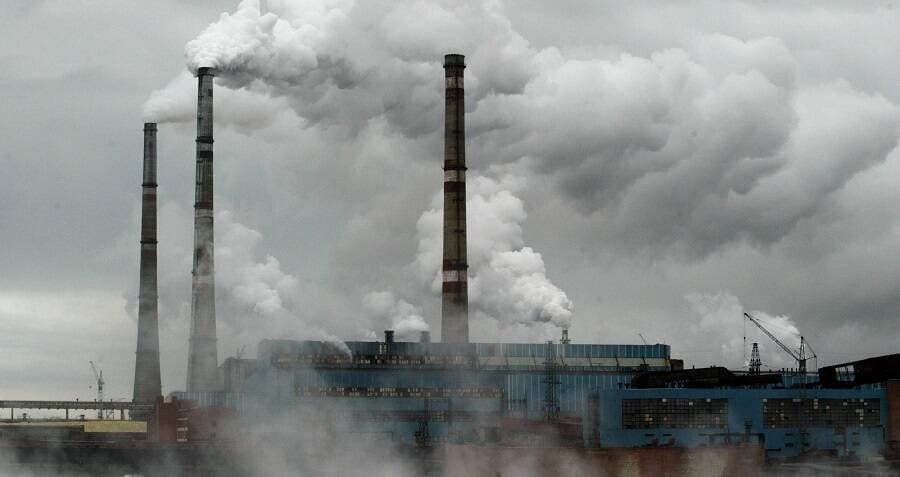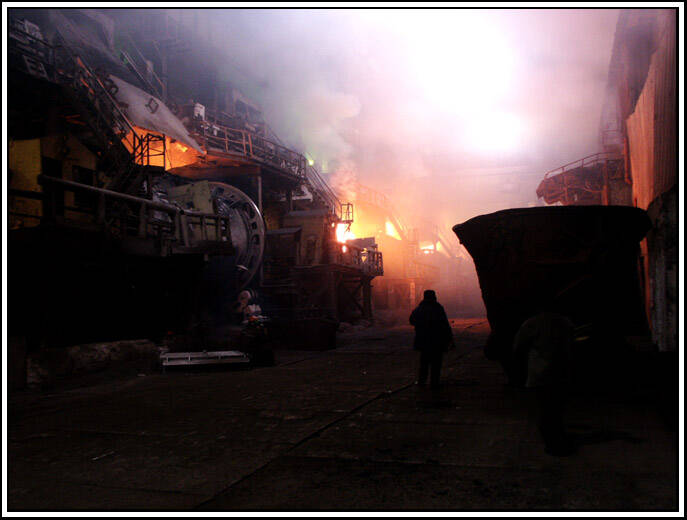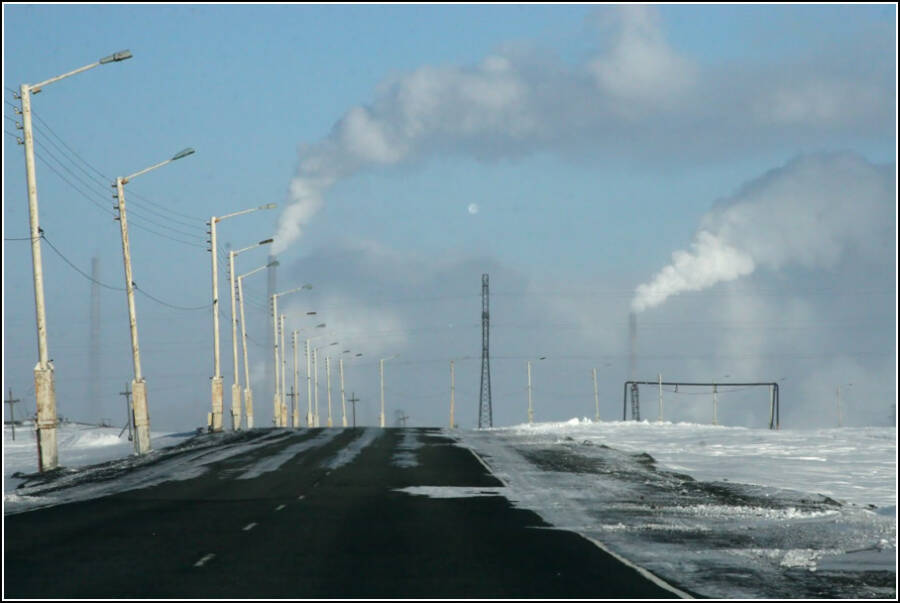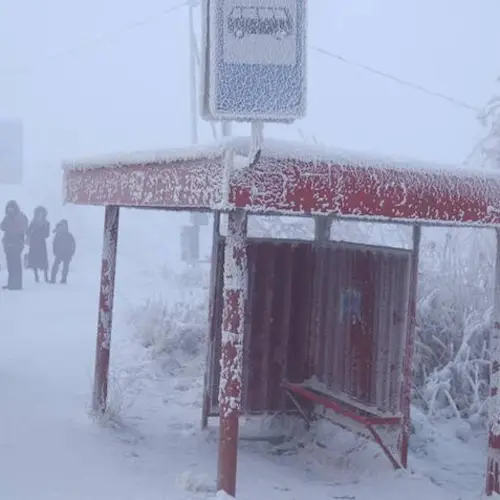Norilsk is a Russian city of extreme cold and extreme pollution, yet 177,000 people have still choose to live there.
The city of Norilsk is one of the Northernmost inhabited cities in the world, located even above the Arctic Circle. But Norilsk is anything but a winter wonderland — it's Russia's most polluted city. It's an isolated place, restricted from tourists, and built on the ruins of a forced labor camp.
So why have 177,000 people nonetheless chosen to live there, making it the largest city north of the Arctic Circle?
Norilsk, A City Of Extremes
Norilsk sits some 250 miles north of the Arctic Circle along the Yenisei River. The only Arctic city larger than this gulag town is the Russian town of Murmansk, but it is not as far north.
As might be expected, its local climate is extreme. In January, the average high temperature is -14.8 degrees Fahrenheit. The record low is nearly -64. In the winter, workers sometimes can't wait at bus stops for fear of freezing to death.
For almost three months of the year, there is no daylight at all while in June and July, there is no night.
But the secret to the city's existence, despite its harsh climate, is the wealth of metals buried beneath the snow.
Norilsk sits on one of the most valuable metal deposits in the world. The metal reserves in Norilsk's mines are the largest on earth at almost two billion tons. As such, the city has become one of the largest producers of nickel and is the largest source of palladium in the world. Palladium is used in electronics and is the most valuable mineral selling at over $1,500 an ounce.
There is also a good amount of copper buried beneath the snow.
The Norilsk mines were originally controlled by the state-owned company, Norilsk Nickel, under the Soviets. The mines were privatized in 1993 and today, are called Nornickel.
Nornickel is the engine of Norilsk as it employs roughly 80,000 people. Today, the company continues to lure workers to toil in this bleak city of smelting refineries and crumbling, Soviet-era architecture, with relatively higher pay than similar such companies.
A City Founded By Prisoners
The city of Norilsk was settled as early as the 1920s for its mineral deposits, but the city was founded officially in 1935 under Soviet leader Joseph Stalin.
Stalin established a system of forced labor camps called gulags, one of which was deployed to Norilsk to mine for the metals beneath its permafrost.
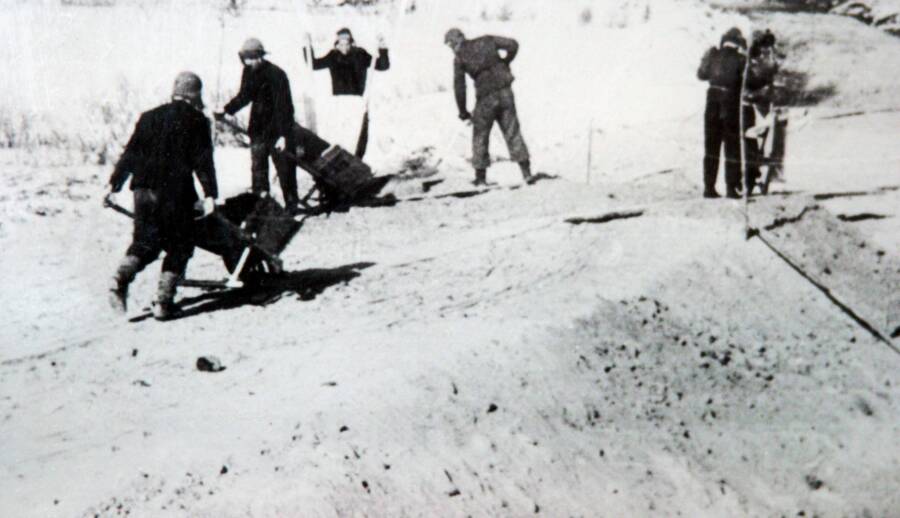
Photo by Laski Diffusion/Getty ImagesPrisoners of the gulag construct the the Salekhard-Igarka Railway, called the "Dead Road," which cuts through Siberia to Norilsk. It's incomplete to this day.
This gulag was called Norillag and contained many political undesirables. Between 1935 and 1953, it was estimated that 650,000 prisoners were sent here. Conditions in the gulag were as extreme as in the Arctic. Prisoners could work up to 14-hour days with no safety equipment.
One Norillag survivor recalled how "it was plain hard labor...We didn't have any days off, except when it was minus 45, minus 50 outside. You were only allowed to write one letter a year. You weren't allowed to have photographs of your relatives."
Some prisoners in the gulag were so desperate that they cut off their own hands so that they could no longer work. After the death of Stalin in 1953, gulag uprisings began immediately. In 1956, the Norillag gulag was shut down but by then it is estimated that 250,000 prisoners had perished.
Even today, the remains of prisoners are discovered during the city's summer thaw.
In their honor, Norilsk has established a museum dedicated to the prisoners of the gulag.
Civilian Life In A City Of Extremes
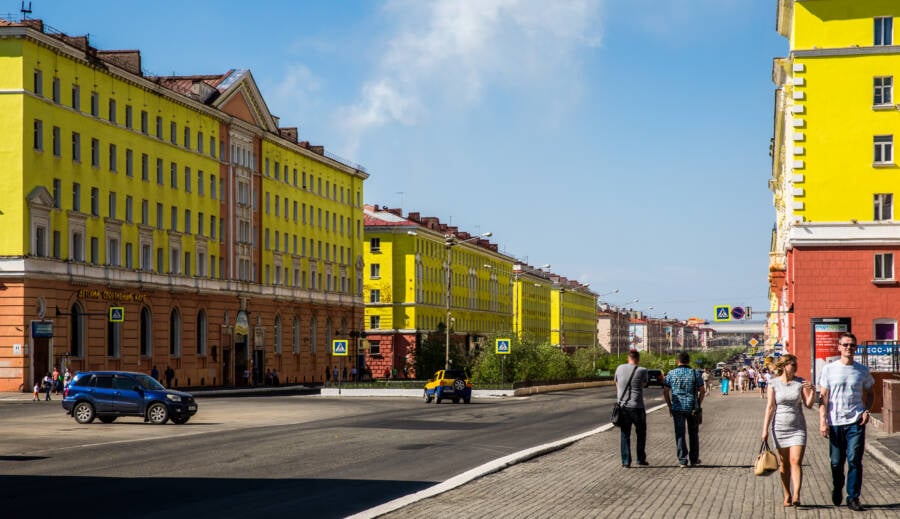
FlickrA street scene in Norilsk during its balmier months. The highs in this time are usually only in the 60s.
As might be expected between the extreme cold and the prolonged periods of darkness, most activity in town occurs indoors.
Still, some brave souls join the local Walrus Swimming club and take polar plunges in the town's local rivers.
The isolated people of Norilsk often refer to their city as an "island" and the rest of Russia as the "mainland." To be fair, it was only in 2017 that the city even received reliable internet.
During the height of summer, the townspeople can venture out onto the tundra when it is more habitable. But even at its warmest, Norilsk experiences only an average high in the 60s.
Locals who get the opportunity to leave town are often loath to come back. One 30-year-old resident was asked by The New York Times how he felt when he visited other parts of Russia on vacation. He responded: "I really do not want to go back and am ready to give anything so that I don't have to fly."
On the other hand, there are those permanent residents who take pride in their ability to thrive in such an extreme place.
Norilsk's Blood River
Unfortunately, all the mining in Norilsk has created an environmental nightmare that Russia has been slow to clean.
Norilsk has been consistently named one of the most polluted cities in the world, particularly due to the high content of sulfur dioxide created from the smelting process. In fact, in some years, more noxious gas was produced in this small town than in all of France.
Mining emissions have killed off an area of trees larger than the state of Rhode Island. In 2016, spillage from the nickel plants turned the nearby Daldykan River red which was consequently dubbed the Blood River. Respiratory disease-induced death is also higher here than it is in the rest of Russia.
However, Nornickel has taken steps to clean up its act. In 2016 it shut down its old 1942 smelter which was the worst emitter of sulfur dioxide. This has had some effect so that by 2019, sulfur dioxide emissions were reduced by 200,000 tons.
However, Nornickel is still the worst sulfur dioxide polluter by three times the emissions of the second worst, a coal power plant in Kriel that emits 714,000 tons.
Nornickel plans to spend about $3.5 billion to help modernize the mine and clean up emissions. Indeed, the city has no choice as it is becoming a victim of the climate change wrought by its own pollution.
As global temperatures rise, the permafrost upon which Norilsk sits thaws, yet another cause for alarm in Russia's most extreme city.
Now that you are finished reading about the polluted city of Norilsk, you may be interested in learning more about the effects of climate change. Or for more on the horrors of Soviet Russia, check out Stalin's 'Cannibal Island.'.

